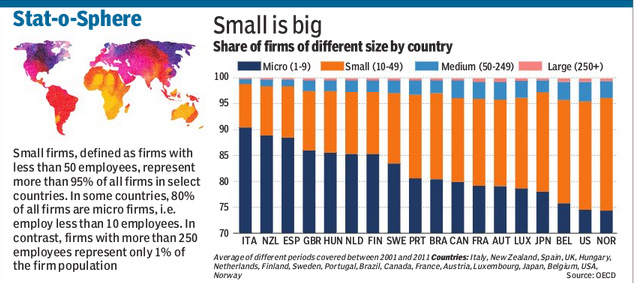The Union Budget is expected to contain specific measures to boost industrial growth. The government has indicated that its priority would be to push up economic growth and job generation, largely by reviving infrastructure and manufacturing industries. This growth agenda has an unmistakable linkage to the skill industry. It is imperative that the skill industry must flourish across the country to provide skilled manpower to support the growth of all other industries.
The skill industry witnessed significant growth in 2013-14, thanks to the STAR programme for ?skill certification and monetary reward?. As much as R1,000 crore was allocated to train and certify one million people under it, and this task was given to the National Skill Development Corporation (NSDC) and the National Skill Development Authority, to be implemented from September 2013 to August 2014.





NSDC data shows the target has almost been met; 12,74,251 candidates were enrolled, out of which 9,66,169 have been trained under the scheme. Candidates have been placed across 278 job roles in various industries. The STAR programme has energised the entire skilling industry, as it provided a solution to the most vexing problem that the training providers were facing, i.e. very low hourly rates for skills training.
The interim budget for 2014-15 has also allocated R1,000 crore for STAR. However, there remain a few challenges in its implementation, which is quite normal when a scheme of this magnitude is taken up for the first time. The coming budget could look at addressing these.
The skill industry?s Top 5 expectations from the budget are:
n The STAR programme: This scheme should continue with an expanded allocation, with the following changes:
w The scheme should be modified into a more demand-driven and employment-linked model with far more employer participation;
w Special drive to include micro, small and medium enterprises into the STAR scheme as MSMEs are the second largest employers. But they are unable to pay attractive salaries to workmen because of issues like unfair competition from the large sector and difficulties in obtaining working capital. The MSMEs need an incentive to step up hiring of the skilled workforce and pay fair wages;
n MSME-focussed apprenticeship programme: The government should launch an MSME-focussed apprenticeship programme where 50% of the salary for the first six months can be claimed as employment subsidy or tax benefit by the MSME employers if they hire a certified employee. This is not an unusual request as the government does give outinvestment subsidies and tax breaks to increase investment in the economy. But an increase in investment does not automatically lead to an increase in employment. The country needs both investment incentives and employment incentives.
n The role of skills ministry: It is essential that the role of the skills development ministry has to be well-defined. The role of the Sector Skills Councils (SSCs) created by the NSDC vis-?-vis the skills ministry must also be made clear. The ministry can be the regulator and SSC the facilitator. The ministry and the SSCs must come up with ideas to bring more people into the organised sector and the ministry should ideally implement skill subsidies.
n Skill coupon: The role of skills ministry should also include consolidation and channelisation of the skills budget, which is now spread across 17 central ministries. This should be centralised through a skill coupon system. The concept of skill coupon is simple. One member of each family in the target population (poor economically and/or socially) will get a skill coupon worth R10,000, which can be exchanged for getting training from any of the 100 to 200 training partners pre-approved by the skills ministry. This will force training partners to compete on quality and placement record to attract candidates with the skill coupons.
n Minimum wages: A recent study by Tata Institute of Social Sciences and TMI shows that the real wages (net of inflation) of an average industrial worker during 1999-2011 remained stationary (overall) or declined (in over 50% of industries). The same has also happened with minimum wages.
There is no uniformity in minimum wages across states. Another problem is, there is no scientific way to arrive at wages for various job roles. Because of this, the gap between unskilled and semi-skilled is as low as 5%, and the minimum wages are also too low. The government may revise the minimum wages for the semi-skilled?those certified by SSC?across the board for a minimum of R10,000 for low-skills job, like a data entry operator, to R15,000 for a relatively high-skills job, like precision welding. The skills ministry can set up a wage board, which will quarterly publish the minimum wages based on scientific studies, as a guideline to be adopted by the states.
In the US, the Federal government announces the minimum wages and the states publish their own minimum wages using the Federal rates as a benchmark. All the Federal government institutions will have to pay Federal minimum wages. A similar model can be implemented in India as well.
T Muralidharan
The author is chairman & managing director, TMI e2E Academy
















